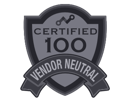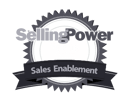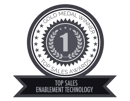Membrain's complete guide to sales enablement
The sales enablement function has grown enormously in the past several years, quickly becoming one of the largest investments organizations make to improve their sales results.
Despite its growth, however, the field continues to confound the sales industry. According to research from Gartner, sellers working in organizations with complex “sales enablement” systems, on average, experience a lower conversion rate than those that don’t. That’s not how it’s supposed to work!
This is because more often than not, “sales enablement” ends up consisting of a complex array of tools, systems, approvals, processes, platforms, and other components that are difficult to use, hard to access, and take time away from mission critical activities. According to the same Gartner study, as a company moves from low to high internal complexity, the burden on sellers increases by as much as 62%.
It’s easy to see why this problem arises when you look at the complexity of “sales enablement” solutions and components that are currently available. The field of “sales enablement” technology alone is vast, as is made clear by the chart from Smart Selling Tools below.
When you consider also the multiple related fields of training, strategy, process, and content, plus the collaboration needed to pull it all off, it’s no wonder people are confused and sales organizations are struggling.
In the first half of this paper, we set out to answer two questions:
What, exactly, is sales enablement; and what, exactly, should it enable?
In the second half, we discuss best practices for establishing an effective sales enablement system that enables what matters.
To reach our conclusions, we surveyed sales executives, directors, managers, and frontline salespeople for their answers to these questions. Then we interviewed sales enablement experts including Tamara Schenk of CSO Insights. Finally, we incorporated a brief case study that demonstrates the results that are possible from understanding and implementing effective sales enablement.
We hope this paper will help you more fully understand the issues, and implement sales enablement more effectively in your organization.
CHAPTER 1
Let’s make one thing clear. Just serving up content to salespeople is not sales enablement.
Initiatives and technologies that do this love to tout it as sales enablement, but it’s not - at least, not if that’s the only thing they do.
So then, what exactly is sales enablement?
If you ask Google, the top hit gives you an answer like this:
Sales enablement is the process of providing the sales organization with the information, content, and tools that help salespeople sell more effectively. The foundation of sales enablement is to provide salespeople with what they need to successfully engage the buyer throughout the buying process.
The Sales Enablement Society defines it as a system that:
Ensures buyers are engaged at the right time and place, and with the right assets, by well-trained client-facing staff to provide a world class experience along the customer’s journey. While utilizing the right sales and performance management technologies, in addition to synergizing cross-organizational collaboration, Sales Enablement optimizes the selling motion in order to increase pipeline, move opportunities forward, and win bigger deals to more efficiently drive profitable growth.
With all of these long definitions, it’s easy to see why people are confused about sales enablement and its execution. Is it a content delivery system? Is it training? What about coaching?
We went to Schenk for clarification, and she offered the following wisdom that is easy to remember and profound in its implications: sales enablement execution is about orchestration.
In other words, it’s not the training or the technology or the content itself, but the orchestration of these initiatives to add customer value and drive:
By focusing on the function of orchestration, the purpose of sales enablement professionals becomes clear. It is not any one of the individual functions we often think of as enablement, but rather ensuring that those individual functions operate consistently, effectively, and collaboratively across the organization, to the benefit of the customer.

CHAPTER 2
Viewing sales enablement execution as orchestration, the next question becomes, ”what exactly are we orchestrating”?
We went to our extensive network of sales leaders, executives, and frontline salespeople for answers. We combed through dozens of responses to understand more clearly what the profession itself expects from sales enablement. Some professionals responded with the obvious but important point that we should enable:
While this point may seem like a throw-away, it highlights the importance of keeping our eyes on the ball. If sales enablement isn’t improving sales results, it’s not doing its job.
The remainder of the responses highlighted five specific aspects of sales success that enablement should support:
Sometimes sales professionals become so focused on producing revenue, that we forget there are human beings on the other end of the sale. Instead, the buyer should be at the core of everything we do in sales. Sales enablement should provide insights into the buyer’s experience and needs, while coordinating a consistent, reliably good buying experience from the first point of contact to closing and beyond.
Most of the time, when organizations talk about sales enablement, they mean literally enabling salespeople. So it’s no surprise that this point was made over and over by sales professionals discussing what sales enablement should enable.
Meredith Odgers, with Qstream, provided a detailed view of how enablement can support salespeople: “It should enable the front line seller to develop the know-how and skills to progress the customer through each stage of the buying journey to close and into post-sale service; enable the front line manager with the insights to shape coaching for individual salespeople; and enable sales leadership with the intel on the capabilities of their sales force to deliver against target, or shift resources and focus to where support is needed most.”
Without the necessary skills to move buyers through the process, salespeople cannot execute on the company’s strategy. But it’s important to note that enablement is not the training itself, nor the content itself, but rather the orchestration that allows salespeople to access the resources, content, insights, and coaching when they need it.
With content, training, and other resources embedded directly into their workflow, salespeople are better able to develop and integrate the skills they need. Likewise, managers and coaches should be able to easily see which skills are lacking with each salesperson, so that they can coach effectively
Coaching is the critical multiplier in your organization. Good coaching drives success. Mediocre coaching leads to mediocre results.
Unfortunately, most coaching is mediocre to bad. There are many reasons for this, which are discussed in greater detail in our coaching white paper. Peter Önnby, sales manager with Ascend, suggests one critical way that sales enablement can support better coaching: “It should enable and support managers to identify patterns and performance gaps related to capabilities, at both the individual and group level.”
Again, sales enablement itself is not coaching training, but rather the orchestration that provides coaches and managers with the critical information they need. A well-designed enablement system will be tied to the company’s strategy and goals, and provide managers and coaches with insights, notifications, and tools that allow them to readily see where their teams need assistance to meet the needs of the organization.
From sales managers to board members, organizational leadership is limited by the quality of data and insights available. An effective sales enablement system ensures that at every level of the organization, the right data is being collected and analyzed to provide useful insights for leadership.
Consistent execution of strategy was not generally discussed among survey participants, but Tamara Schenk cites it as one of the most important functions of sales enablement.
Sales training, technology, and content that is not tied to a consistent strategy is not really enablement and not likely to produce results. True enablement provides a framework for connecting decisions made at the strategic level with sales processes in every division of the company. It supports the execution of the strategy across all levels of the organization and makes it easy to adapt and implement it on an ongoing basis.
CHAPTER 3
Currently, the market is saturated with sales enablement tools, technologies, and services that are failing to move the needle. According to Schenk, most of these tools and technologies represent point solutions that simply are not working.
There are many reasons for this, but the primary problem is that the solutions are not connected by an overarching strategy, and they’re not implemented into the daily workflows of the people who need to use them. In other words, the orchestration is failing.
Point solutions like email automation, call recording, proposal automation and e-signing can be powerful, but organizations that continue to invest in them without a clear strategy will continue to struggle.
Instead of buying up new point solutions, organizations must choose to invest in five key matters that are not enablement in themselves, but that lay the appropriate groundwork for effective enablement. Those five things are:
Without these five things, sales enablement can never rise above the level of point solutions to provide real value to your team.
CHAPTER 4
When sales enablement functions optimally, it orchestrates consistent sales effectiveness across the entire organization. To do that, it must serve six key functions:
An effective sales strategy places the buyer at the center of the equation. Effective sales enablement collects data and provides insights that help sales leaders understand and respond to the needs of buyers. Likewise, it provides the tools that ensure a consistent buyer experience.
Often, organizations invest in developing a sales strategy but fail to implement it effectively. The strategy is critical, but without a process and system that makes it actionable, it won’t deliver.
Just as a sales strategy without a process is ineffective, so too is a process that nobody uses. In order to ensure that salespeople and their managers actually implement the sales strategy, it must be placed into their daily workflow, and provide them with immediate value. This is where technology like Membrain can become a part of your sales enablement system. Membrain builds your process directly into the salesperson’s workflow, putting it literally in the palm of their hand.
Serving up content is not in itself sales enablement, but it can be a valuable part of an enablement system. Choose technology that makes it easy to place training material inside the process so that salespeople see it exactly when they need it. You can do the same thing with sales collateral and marketing materials for salespeople to use during the sales process.
Coaches and managers must possess the right mindset, skills, and tools to do their job well. Sales enablement can help by giving them access to accurate metrics and insights based on sales strategy. They should be able to access leading and lagging indicators and receive notifications that help them identify what, when, and how to coach each individual salesperson.
Sales enablement cannot be a static system. It must be agile and adaptable, and it must make it easy to improve the strategy, process, training, content, and other elements of the system over time. Top-heavy sales technologies like Salesforce, SAP, and Oracle do a poor job on this score, because of the difficulty and expense of making changes. Choose technology tools that provide a user-friendly interface, informative and actionable workflows, and tools to simplify continuous improvement.
Many organizations implement new technologies, training, and other sales “enablement” initiatives without providing themselves the ability to effectively measure the outcome. Before you implement a new program, start by setting up a system to collect meaningful data that will allow you to measure the results of your program. This will give you the ability to prove whether your efforts are effective, and to see what is working and what can be improved on.
Or put another way: Measure, and measure again.
With everything that is required to ensure a successful sales enablement initiative, it may seem obvious that responsibility for it must begin at a high level.
According to Steve Ammann at the sales methodology and training company MEDDIC, many organizations, in their rush to jump on the bandwagon, relegate the job of “sales enablement” to a position that amounts to a glorified admin. This is very unfortunate and must be prevented.
“Sales enablement should be supported at the highest levels of the organization, and placed in the responsible hands of an executive or director who can maintain the high-level view necessary to support the role of enablement as orchestration across the organization. “
"I expect talented people in this role to access the C suite and get a seat at the management table, maybe as Chief Growth Officer,” says George Brontén, founder & CEO of Membrain.
"Individuals in other areas of the organization can then be made responsible for pieces of the enablement, to support the high-level work at the executive and director levels."
When sales enablement is done right, the results can be astonishing. When Analitek set out to improve their sales performance, they did many things right, and their results speak for them:
Analitek is a global supplier of laboratory solutions for academic, life sciences, mining, environmental, energy, and many other industries.
When they made the decision to grow from a small, regional firm to a global powerhouse, they looked to their sales as a key leverage point. They invested in effective strategy and process, and used Membrain to operationalize the process within the organization.
The result was a sales system fully enabled and orchestrated across the organization to deliver consistent, dynamic reliable, scalable results.
How you sell matters.
Click above to learn more about Analitek's journey to double their win rate in a single year
From north to south, east to west, Membrain has thousands of happy clients all over the world.



